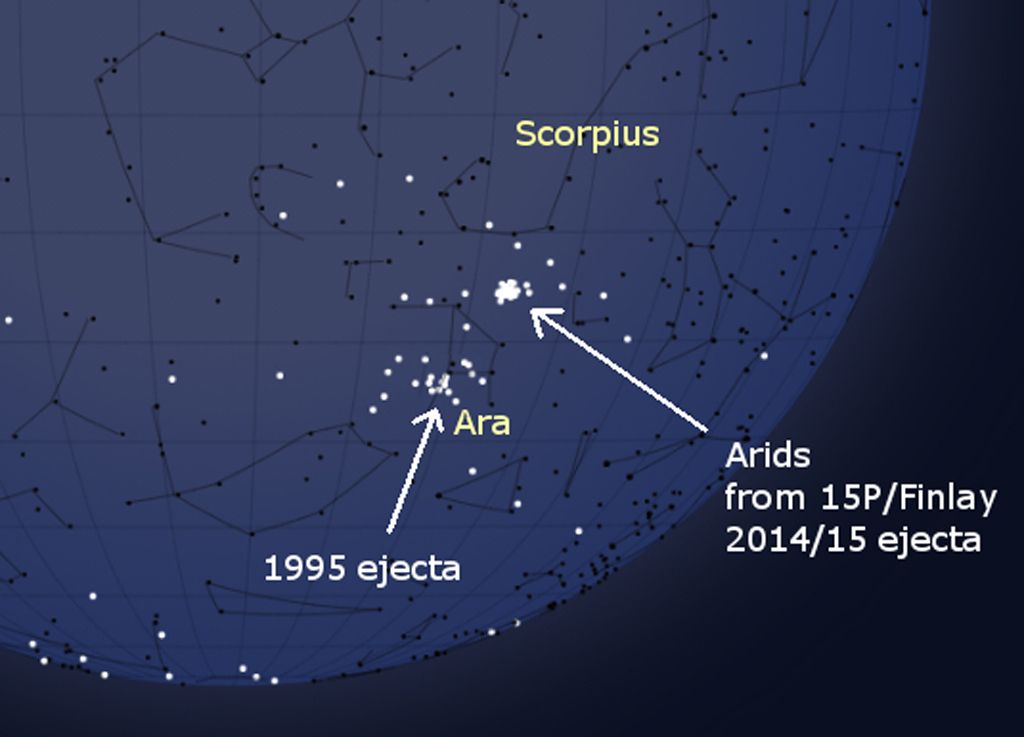
The anticipated Arid meteor shower from encountering the 2014 and 2015 ejecta of comet 15P/Finlay, when the comet was unusually active, did happen much as expected. SETI Institute meteor astronomer Peter Jenniskens and colleagues of the global CAMS low-light meteor orbit surveillance network, report in a CBET telegram that 19 Arids were triangulated in partial clear skies by the CAMS network in Chile, as well as from locations in the USA, Australia and Namibia (c.f. http://cams.seti.org/FDL/ for the date of 2021 October 7), showing that the meteors radiated from a geocentric radiant position R.A. = 256.8 +/- 0.8, Decl. = -48.3 +/- 0.6 deg., with geocentric speed Vg = 10.5 +/- 0.3 km/s. This is in good agreement with the predicted position at R.A. = 256 deg., Decl. = -48 deg., and Vg = 10.7 km/s. The position is lightly north-west of the direction from which the 1995-debris radiated, but still in the constellation of Ara. Visual observer T. Cooper of the Astronomical Society of Southern Africa, described two +1 and +2 Arids as: "Both very slow, noticeably orange, and sparkling appearance". Most meteors were faint. The outburst was also detected by radio forward meteor scatter observations, summarized by H. Sugimoto and H. Ogawa of The International Project for Radio Meteor Observations (https://iprmo.org/flash/arids-2021.html). The shower peaked around Oct. 7 at 1h UT. Their preliminary peak Zenith Hourly Rate is 80/h, higher than that from the 1995-dust trail encounter.
Read more:
https://www.meteornews.net/2021/10/07/a-second-arid-shower-outburst-in-2021/





